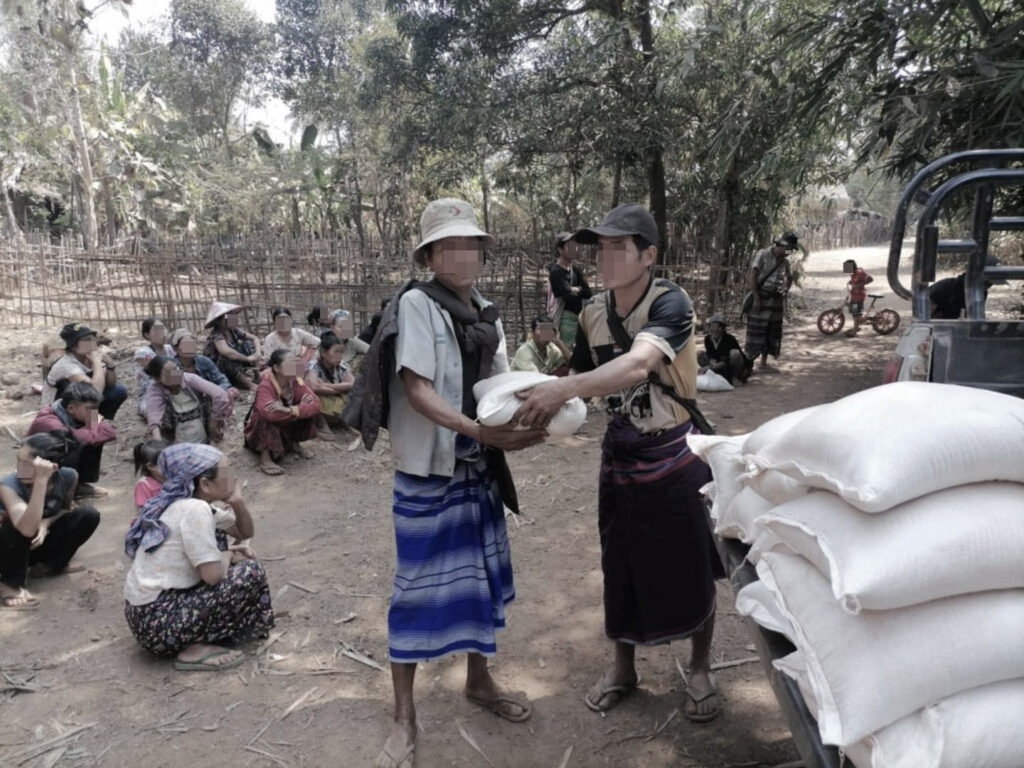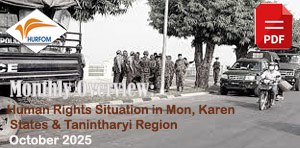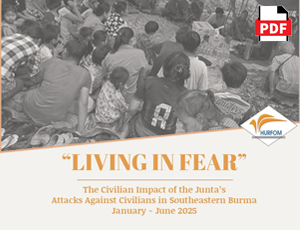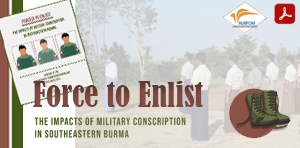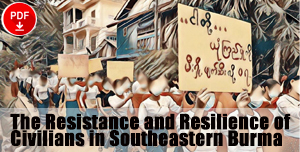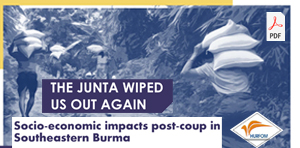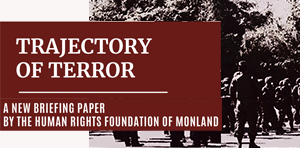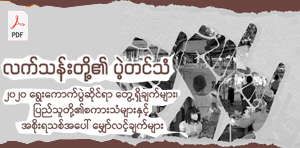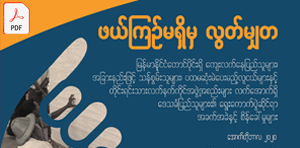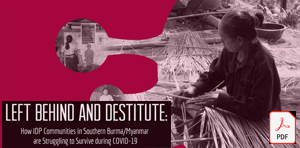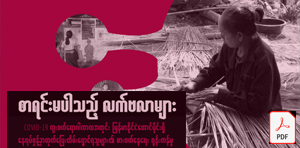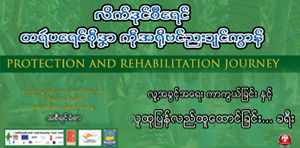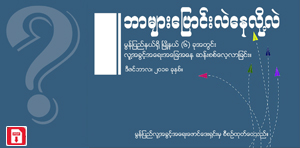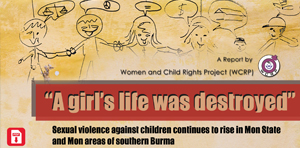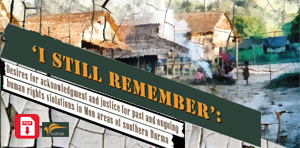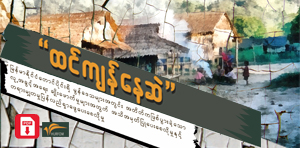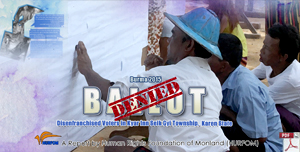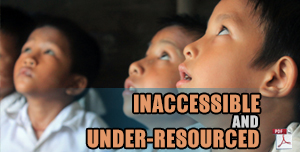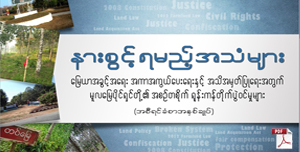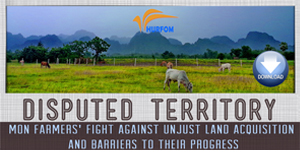Ongoing Junta Airstrikes in Bilin and Kyaik Hto Townships Leave Over 5,000 IDPs Stranded and Vulnerable
April 29, 2025
Despite months passing since the initial attacks, more than 5,000 displaced villagers from six communities across Bilin and Kyaik Hto Townships remain unable to return to their homes, citing daily aerial threats and surveillance by junta forces.
Displaced families from Min Saw and Tagaylaung villages, among others, continue to shelter in territories controlled by Ethnic Resistance Organizations (EROs), too fearful to go back due to frequent flyovers by junta spy aircraft and drones. Field reports confirm that access to food, safe shelter, and basic necessities has become increasingly difficult, especially with the onset of the rainy season fast approaching. Many IDPs face not only physical displacement but also emotional trauma, as fears of sudden attacks loom over them daily.
According to a 56-year-old Karen villager displaced from Min Saw:
“The last major aerial attack occurred on April 19, 2025, when the junta bombed Min Saw village in the Tagaylaung village tract of Bilin Township. This was the second time the area was targeted — the first attack was on February 9, 2025, when a junta jet fighter dropped a 500-lb bomb, damaging a monastery, homes, and killing civilians.”
Due to these repeated assaults, more than 2,600 residents from the Tagaylaung village tract, which had over 700 households, have fled to ERO-controlled territories and remain displaced today.
Similarly, in Kyaik Hto Township, survivors from villages around Painae Gone have been unable to return home since an aerial attack on February 13, 2025. More than 2,400 civilians from three nearby villages remain displaced. A local service provider explained:
“The junta dropped 500-lb bombs, killing three civilians and injuring at least ten others. Since then, junta aircraft continue daily aerial surveillance over Min Saw and Tagaylaung villages, making it impossible for people to feel safe enough to return. Families are struggling to survive in makeshift shelters.”
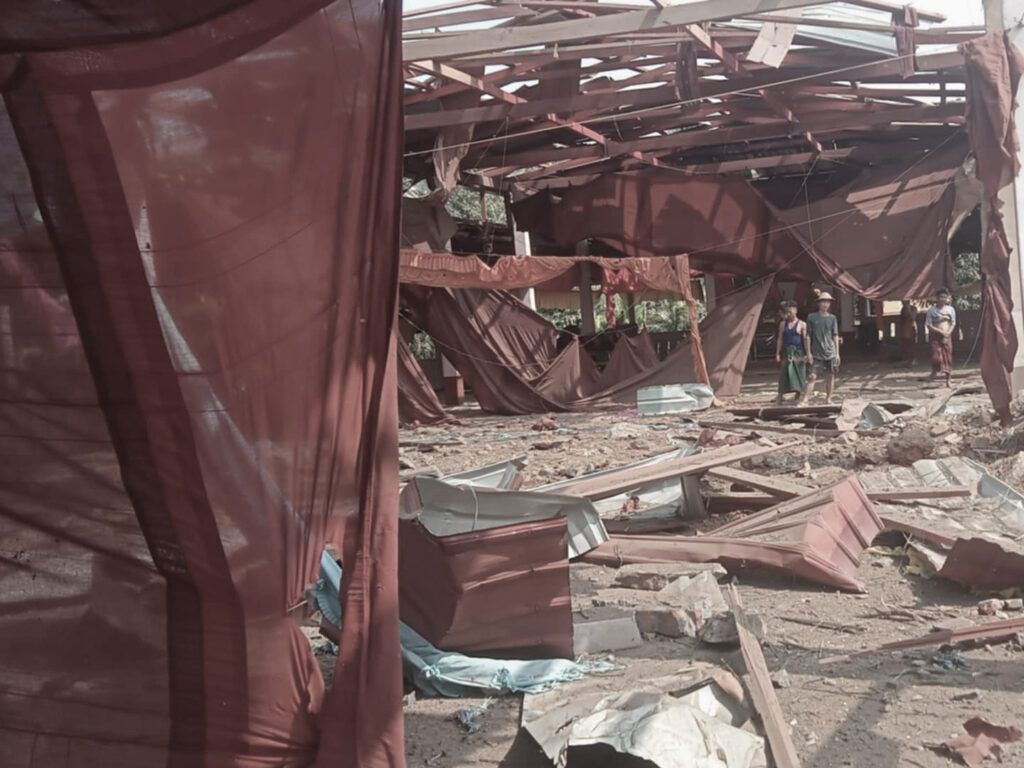
Another local volunteer, herself an IDP, shared:
“At first, building shelter was already difficult. We had to rely on bamboo and thatch to build small huts. Now, with the rainy season approaching, it will only get harder. The junta’s constant air threats make it impossible to farm or rebuild our lives. Humanitarian aid is also extremely limited. We don’t know how we will survive the coming months. All we can do is pray that our children won’t fall sick when the rains bring new diseases.”
Most of the IDPs currently sheltering in KNU’s Brigade 1 areas were formerly self-sufficient farmers, rubber plantation workers, and small-scale livestock owners. Before the military coup, they lived stable lives in their home villages. However, since the coup and escalating military offensives, they have become victims of relentless aerial bombings and indiscriminate artillery attacks.
An Emergency Response Team member working with displaced communities reflected:
“If we cannot work safely or live securely, we cannot sustain our lives here in the long term. The junta’s military pressure grows stronger every day, and even now, we haven’t found a truly safe place to rebuild our futures.”
The situation in Bilin and Kyaik Hto Townships highlights the ongoing humanitarian catastrophe facing thousands of civilians in southeastern Burma, with urgent calls for increased international support to reach displaced communities before conditions deteriorate further.



